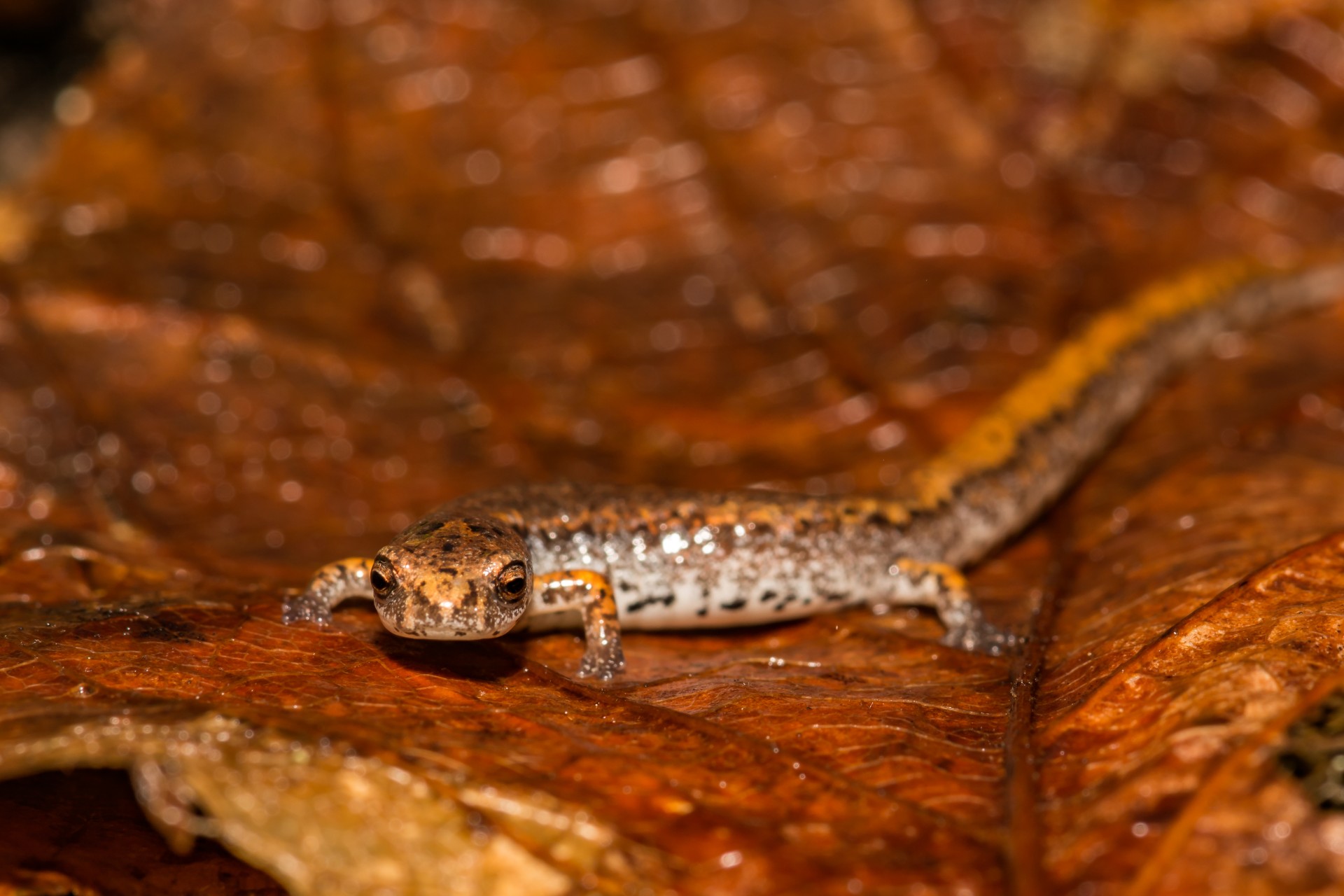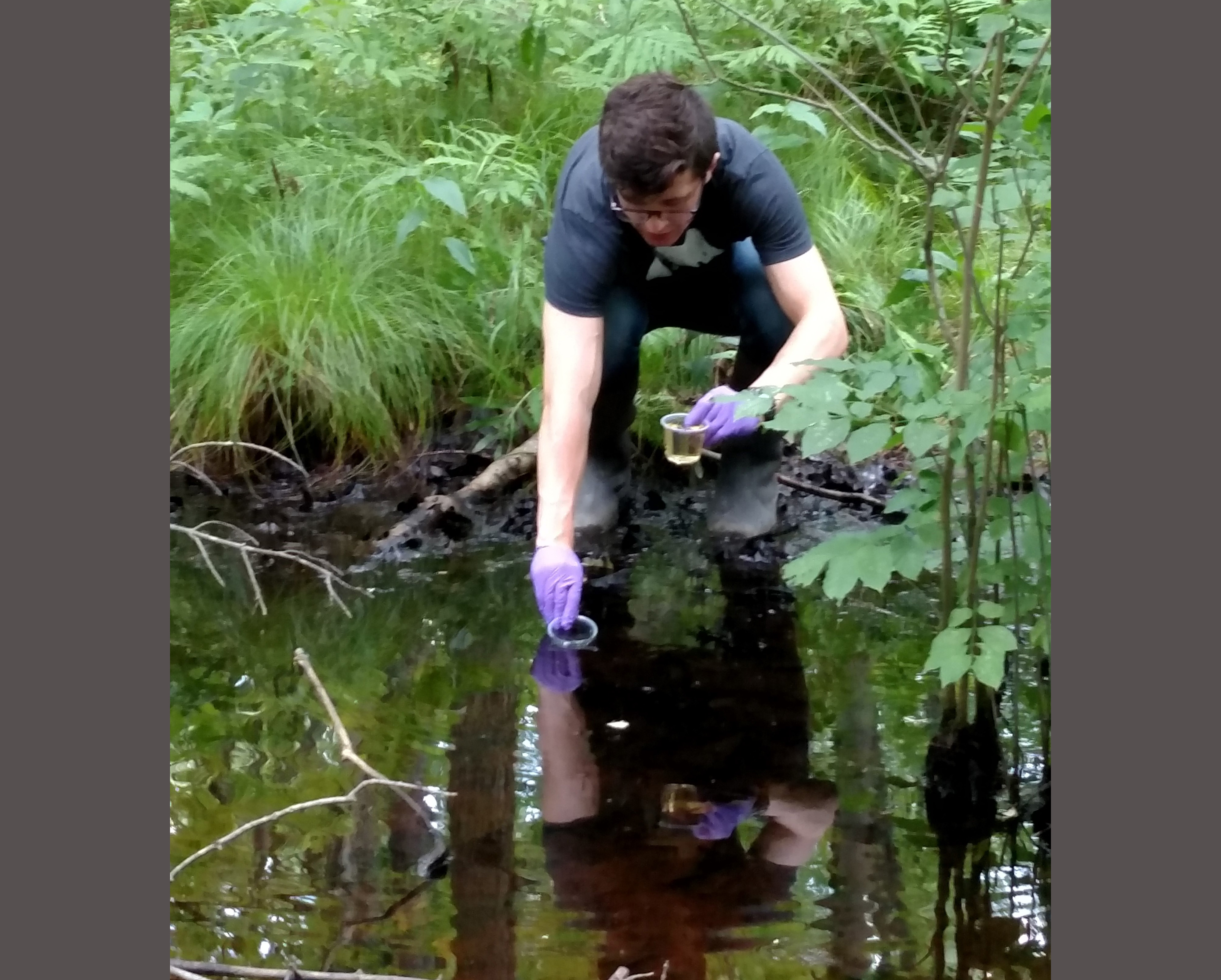Protecting wildlife is hard. Every species has a unique set of environmental needs and is faced with a unique set of challenges and threats. These constraints mean that wildlife conservation can get very complicated, very quickly, when managers must balance the needs of many different species at once.
But before wildlife managers can even begin to think about taking steps to protect a species, they first need answers to some basic questions, including "Where does the species live?"
Answering that question can be hard for species like the four-toed salamander (Hemidactylium scutatum), a small salamander that spends most of its life burrowed in leaf litter in forested areas. Relatively little is known about the population of four-toed salamanders because they are very difficult to find. Even experienced people may only be able to find animals sporadically in the same few spots year after year, making it really hard to determine if the species needs conservation interventions.
To try and find a better way to answer the question, “Where do four-toed salamanders live?”, we turned to environmental DNA. Environmental DNA, or eDNA, is free DNA found within the environment. Every living thing sheds old cells containing DNA into their environment; if we can collect four-toed salamander DNA directly from their environment, then we no longer need to capture the animals to determine where they are living.
However, eDNA detection can be tricky. To get a positive four-toed salamander detection with eDNA, we need a water sample that contains shed four-toed salamander cells, a filter with a pore size small enough to capture those cells from the water sample, and a molecular test that is sensitive enough to detect tiny amounts of four-toed salamander DNA among the mix of DNA from other species living in or near the water. Without any one of these things, we could miss out on finding the four-toed salamander
We successfully developed sample collection and molecular biology methods that are able to detect four-toed salamander eDNA and have confirmed that these animals are still present at sites where they were found historically but haven’t been detected for decades. Identifying cryptic or elusive species in their natural habitat is vital for conservation planning and habitat management. Using eDNA, finding species that are small, well-camouflaged, or live in hard-to-reach places may become less challenging. More information about our methods is available in the openly accessible publication, “Aquatic eDNA can advance monitoring of a small-bodied terrestrial salamander and amphibian pathogen”!
Kaganer, A. W., Stapleton, G. S., Bunting, E. M., & Hare, M. P. (2022). Aquatic eDNA can advance monitoring of a small-bodied terrestrial salamander and amphibian pathogen. Environmental DNA, 4, 1164–1175. https://doi.org/10.1002/edn3.316




